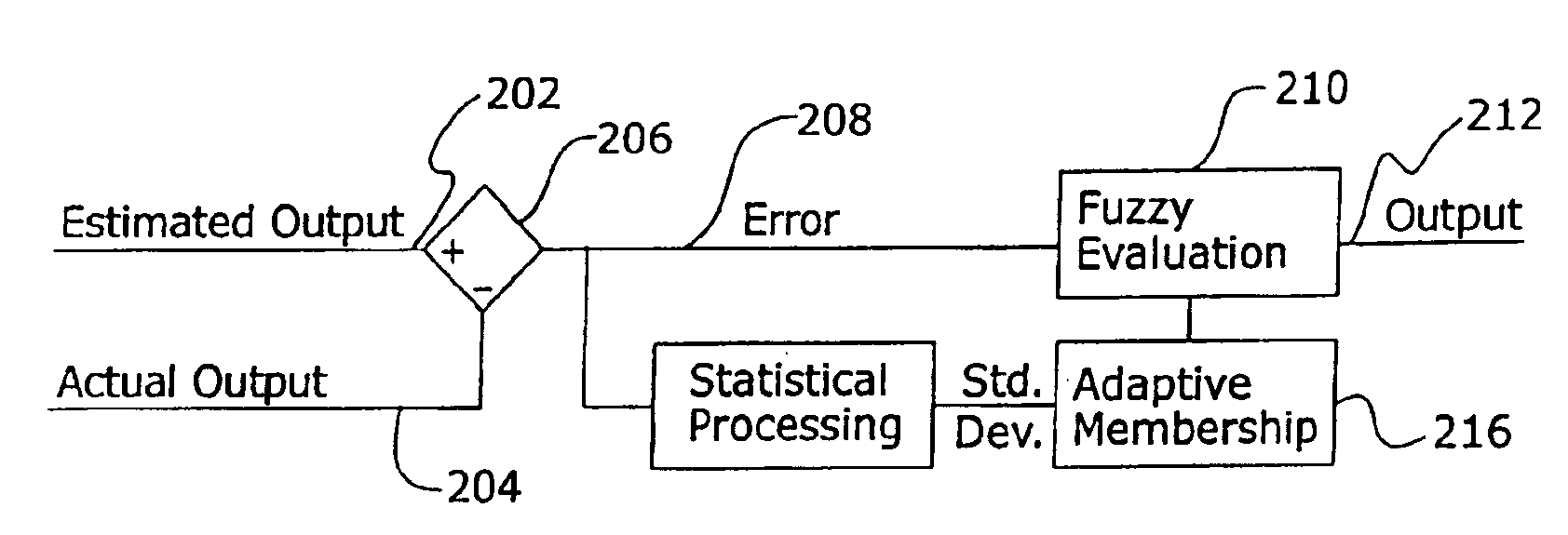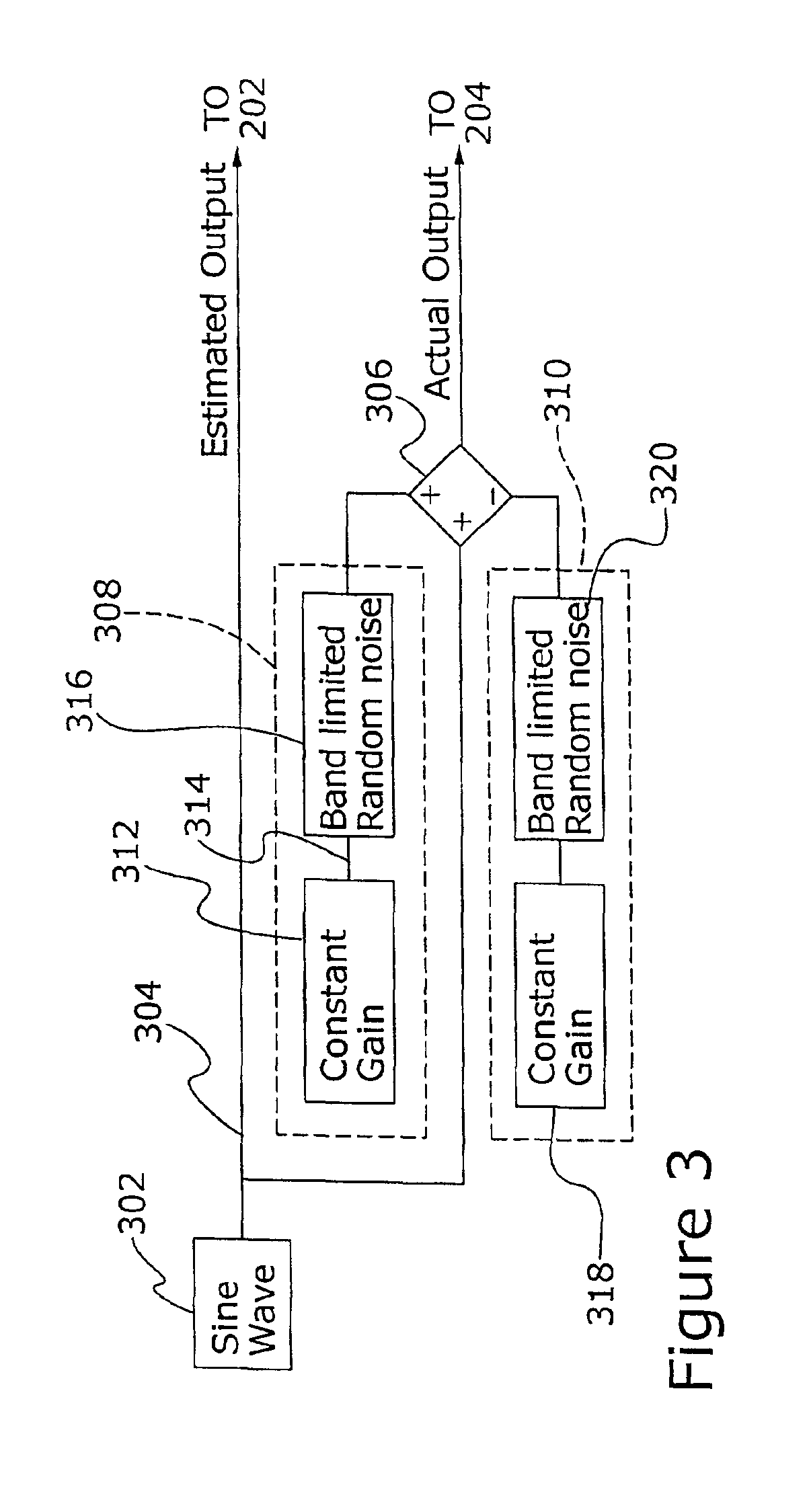Fuzzy logic method for adaptively evaluating the validity of sensor data
- Summary
- Abstract
- Description
- Claims
- Application Information
AI Technical Summary
Benefits of technology
Problems solved by technology
Method used
Image
Examples
Embodiment Construction
[0026]In the discussion below we explain how the method of determining the validity of a sensor signal was simulated and tested to determine is viability. This was done by using a set of data created specifically for this purpose and saved to a computer file.
[0027]To devise a system to determine whether or not a sensor signal is valid (i.e. acceptable or unacceptable) and therefore whether or not it should be used in further computer processing, the first step is to develop a general structure of such a system and determine its feasibility. In this first step we developed a generic fuzzy quality module that can evaluate sensor output. The general structure of this module is shown in FIG. 1.
[0028]In FIG. 1, a signal whose quality or validity is to be determined is placed on input line 102. This signal is fuzzified in block 104 where it is converted into memberships in two or more fuzzy sets. A fuzzy logic inference engine then applies a plurality of rules from a rulebase to the set m...
PUM
 Login to View More
Login to View More Abstract
Description
Claims
Application Information
 Login to View More
Login to View More - R&D
- Intellectual Property
- Life Sciences
- Materials
- Tech Scout
- Unparalleled Data Quality
- Higher Quality Content
- 60% Fewer Hallucinations
Browse by: Latest US Patents, China's latest patents, Technical Efficacy Thesaurus, Application Domain, Technology Topic, Popular Technical Reports.
© 2025 PatSnap. All rights reserved.Legal|Privacy policy|Modern Slavery Act Transparency Statement|Sitemap|About US| Contact US: help@patsnap.com



